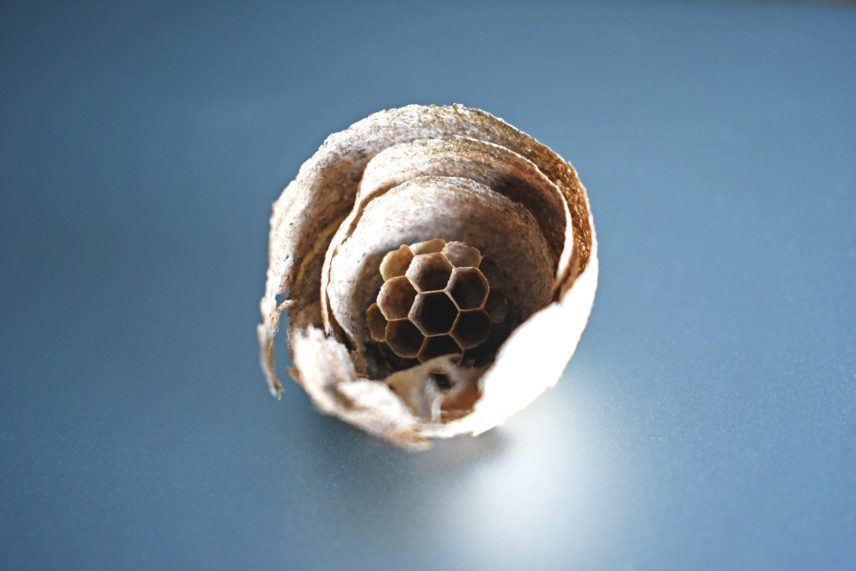Finding a wasp flying around your yard is an unpleasant surprise. Finding an entire crowd of these uninvited guests making their home on your property can be downright worrying.
Worse, wasps are far from pleasant neighbors. Known for their aggression, these insects can be surprisingly dangerous: the CDC notes that there are around 62 deaths a year as a result of hornet, wasp, and bee stings. In other words, if you’re wondering how to get rid of wasps, the last thing you might want to do is venture into your yard!
Our team at Pointe Pest Control has years of experience dealing with these common pests, from identifying the nuisance at hand to dealing with the nest itself. If you’re considering a DIY wasp removal, here’s what you should know before you try.
Identify Your Wasp Nest
First things first: make sure you know what kind of infestation you’re dealing with.
Unfortunately, Pennsylvania is home to a number of species of flying bugs that sting—which means that you’ll want to make sure that wasps are in fact the main culprit on your property.
If you got a good look at the insect in question, you may already know the problem is a wasp infestation. Otherwise, it helps to locate the nest in your yard.
Paper wasps are among the most common types of wasps in our area. As their name suggests, these wasps tend to create papery-looking nests that are often rounded in shape. If you find one on the underside of your porch eaves, a branch, or another sheltered object, you’ll likely notice that its concave shape resembles an inverted umbrella.
Alternatively, you might notice that your problem is a yellow jacket or bald-faced hornet nest. Both of these species are technically social wasps, and though their nests may look paper-like, you’ll tend to find them in different areas from the common paper wasp. They’re also much more aggressive than their paper wasp cousins, and they will chase a threat far from their nest, so take care when approaching them!
Yellow jackets like to build their nests in enclosed spaces like cracks in the siding or openings in vents. They may also create nests in cavities in the ground.
Bald-faced hornets, on the other hand, tend to build nests in tree cavities, though you may sometimes find them in enclosed wall voids as well.
If possible, it’s always better to locate the nest from a safe distance. Often, you’ll be able to spot wasps swarming around an area from far away without needing to get too close.
Precautions to Take Before Dealing With Wasps
Above all else, it’s important to consider your own safety before you try any DIY solution to your wasp problem.
Where bees lose their stingers after stinging a threat, wasps can sting multiple times—which can pose a significant health risk if you upset a nest of them. In some cases, even the simple act of interfering with their social behavior can cause wasps to panic and get aggressive.
If you choose to tackle your infestation on your own, wear as much protective clothing as you can. Layer up with thick clothes, and wear gloves, goggles, and a covering over your face.
Last, but not least, make sure you know how to treat a wasp sting—just in case.
Know How to Get Rid of Wasps
Note that you should never attempt to remove a nest by knocking it from its place. This is an easy way to find yourself dealing with an entire swarm of aggressive, stinging insects!
We also don’t recommend following popular “natural methods” like pouring essential oils or boiling water onto a nest, as you will likely fail to kill the entire colony while angering the surviving insects.
Instead, the best way to get rid of wasps is to kick them out of their home by killing them and making their nest unlivable.
Applying pesticide is the best tactic here. It’s possible to find a variety of applicators from home improvement stores, from sprays and foams to dust applications. The best options will kill the wasps within seconds of exposure and destroy the nest itself.
Finding the right product is critical: the last thing you want to do is choose a solution that won’t penetrate deeply enough for the nest size, or one that won’t drench the entire nest. In addition, many common wasp removal products contain harsh chemicals that can affect your home and yard. This is why working with an eco-friendly, professional-grade insecticide is often the best choice.
Consider Contacting a Professional for Your Wasp Removal
As we’ve stated above, it’s possible for homeowners to attempt a wasp removal on their own, especially with easy access to a range of chemical sprays. However, should your attempt go wrong, you might find yourself fighting a host of stinging pests!
Whether you’re worried about aggressive stinging or whether you have a large infestation that’s gotten out of hand, calling in an expert is always the safer choice. With the right gear, tools, and eco-conscious pesticides, a pest control professional can get rid of wasps with far less stress and fuss on your end.
Kick Uninvited Guests Off Your Property
When you reach out for wasp control services, a member of our team can give you tips on how to get rid of wasps for good. Rather than dealing with this aggressive infestation on your own, reaching out to a pro can help you avoid nasty and even dangerous stings while letting you regain control of your own property once more.
Pointe Pest Control has years of experience helping homeowners throughout the area deal with their infestations, and we’re happy to help you kick these uninvited guests out of your home. From the initial inspection to wasp extermination and prevention, our experts focus on superior care through eco-friendly tactics and our 100% satisfaction guarantee. For more information on our wasp removal services, or to schedule your free inspection, fill out our online form.


